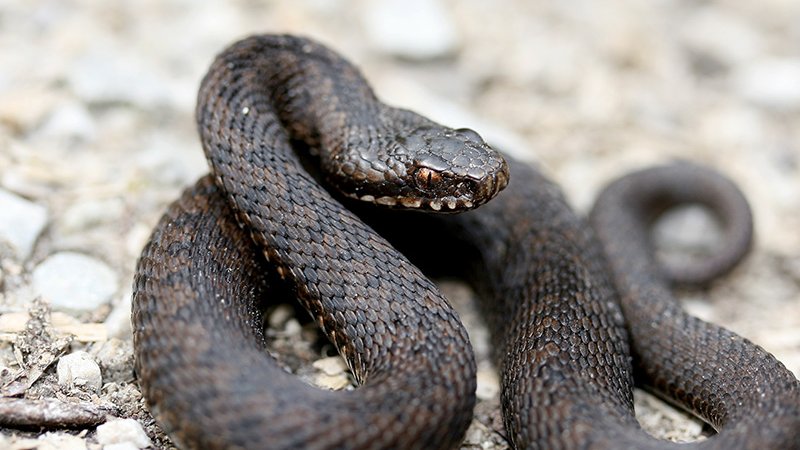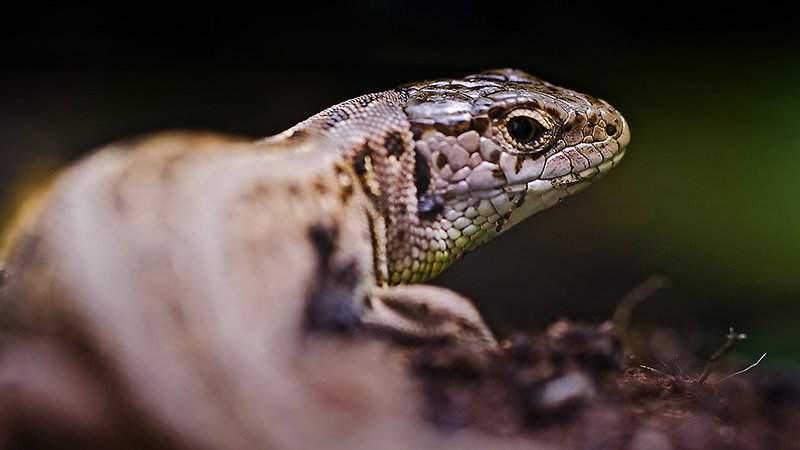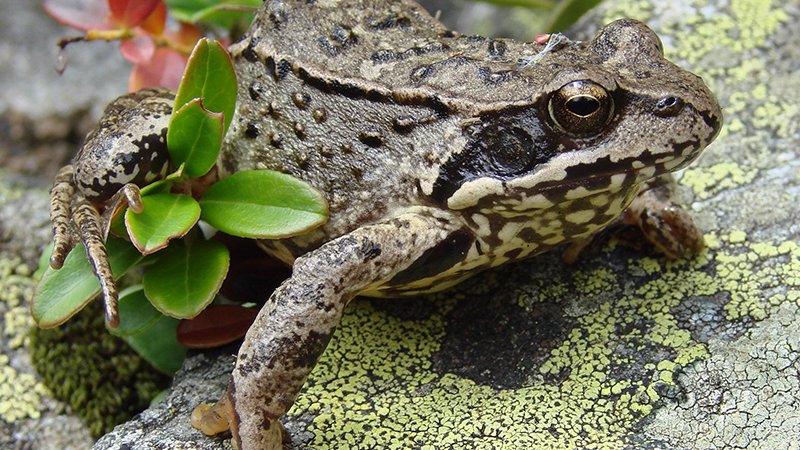Special adaptations and strategies allow cold-blooded amphibians to inhabit even this cold, inhospitable environment. The larvae of the Alpine newt (Triturus alpestris) for example pass the winter in pools and bogs. If they don’t manage to take up enough food during the summer, the larvae only undergo metamorphosis next spring. The Common frog (Rana temporaria) is also very closely bound to water during reproduction. In spring, this brown frog with its characteristic dark brown spot above the temple lays about 4,000 eggs in the water. The fully developed young frogs leave the water in late summer and disperse in the surrounding area. Within the family of reptiles, the dark brown Common lizard (Lacerta vivipari) is frequently encountered. It has a slender body and is often found above the tree line. It has adapted to the rough conditions by giving birth to fully developed offspring. Therefore, it can successfully populate extreme habitats in high alpine regions far removed from water. It feeds on earthworms and insects. Its main predator is the European adder or viper (Vipera berus).

Common lizard

Alpine newt

Viper












